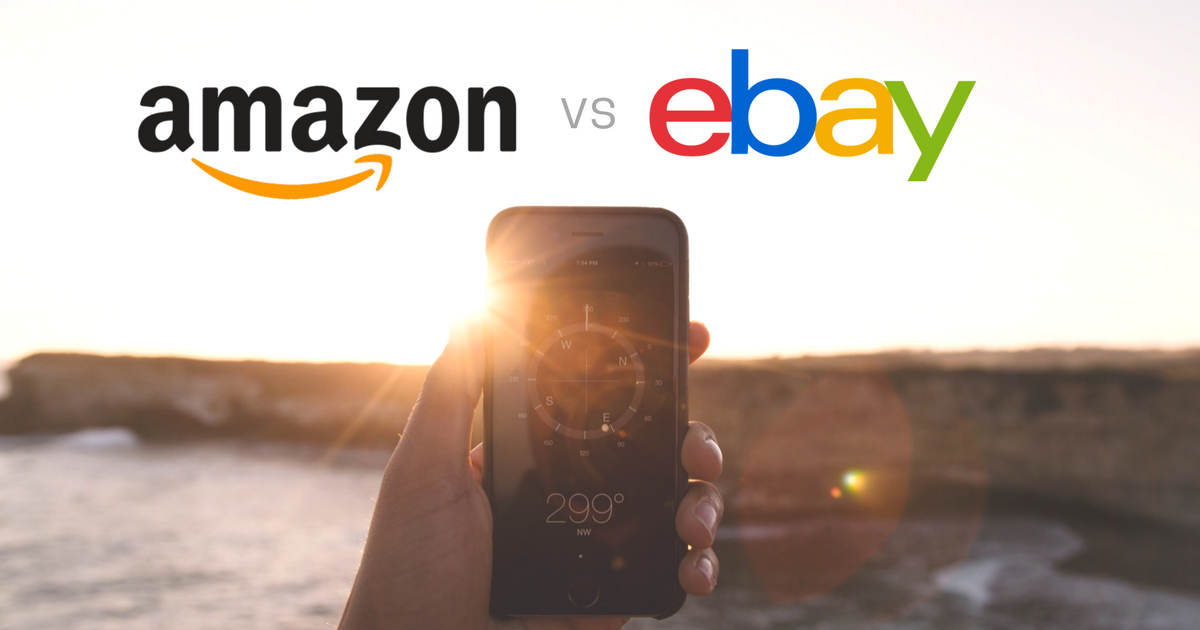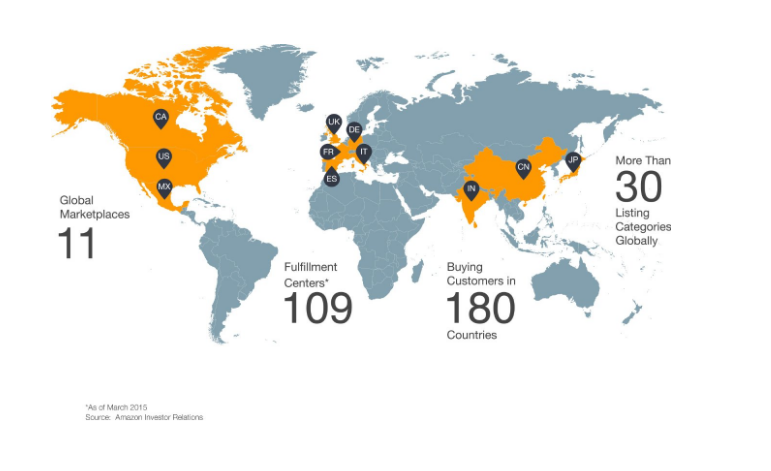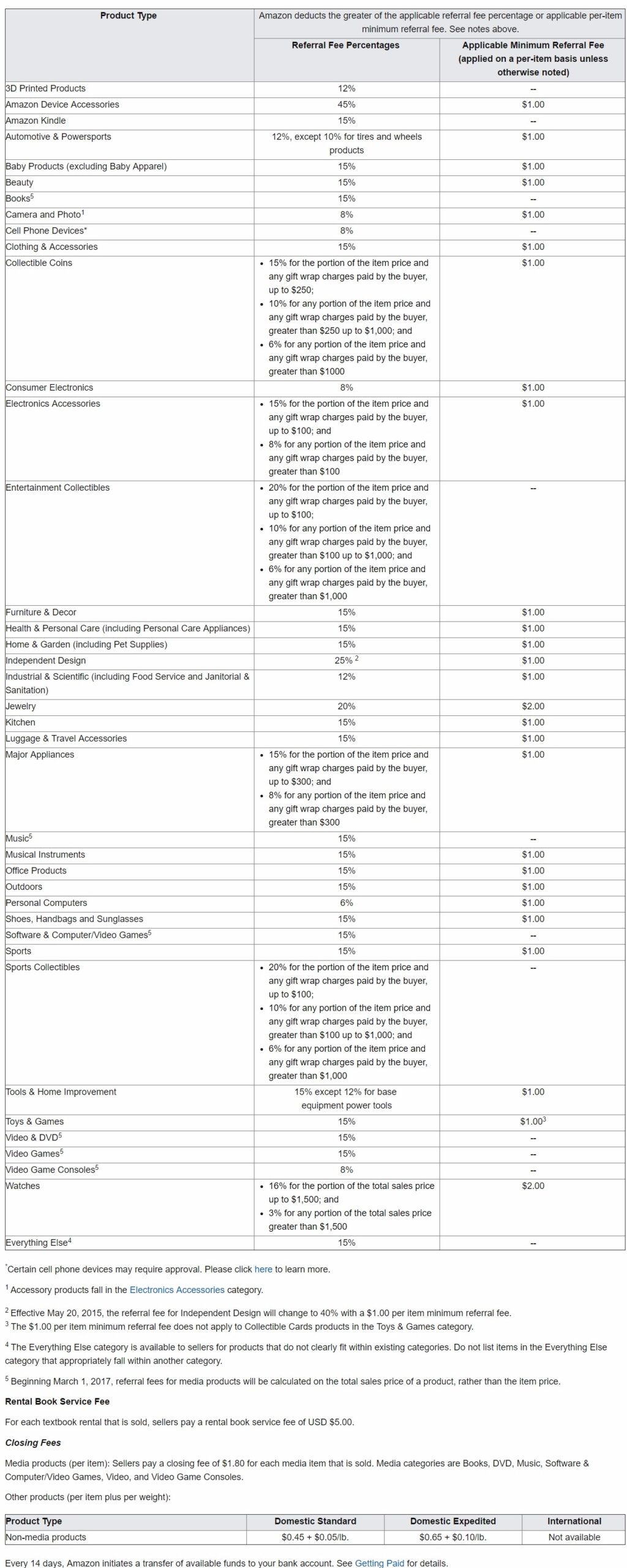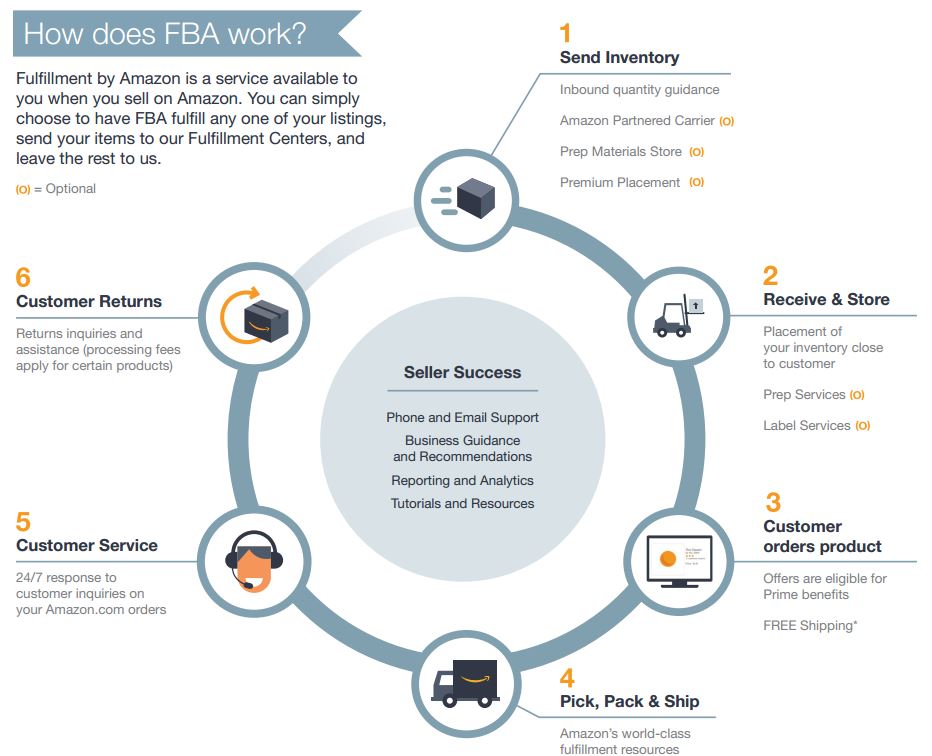Selling on Amazon vs Ebay | Where to Sell & Why


Frequently, sellers will threaten to leave Amazon for eBay when a big TOS change hits.
In a sense, those sellers are like North American voters who threaten to leave the US for Canada when the election doesn’t go their way–they usually stay.What we’re trying to say is, the point of this post isn’t to make an apples-to-apples comparison of two online marketplaces.
eBay is not a substitute for Amazon, nor should it be considered one. eBay’s CEO Devin Wenig has said before that he’s not trying to compete with Amazon. He’s just trying to create a better eBay. Instead, this post should give you a better sense of the major differences between these two marketplaces, and what you can expect from each one.
In the end, you may find that a strategy involving both platforms is necessary–or you’ll just confirm that you’ve already chosen the right marketplace for your products. If you want to jump to any subject in this post, simply click the links for that section.
Sellers
Customers
Countries
Products
Account Types & Selling Fees
Shipping
Conclusion
Over 100,000 new sellers join Amazon every month.
Increasingly, large brands and retailers such as Nike are flocking to the ecommerce site, and Amazon has some competitive private label brands of their own.
This makes it harder than ever for small retail arbitrageurs to succeed on the platform, particularly now that resellers must pay a minimum of $1500 to sell certain restricted brands. However, there’s plenty of room for solid private label brands to edge their way in, and Amazon now offers EBC and A+ content along with brand pages to give sellers better branding opportunities.
The bottom line is that Amazon is becoming a competitive marketplace for professional sellers, not scam artists or those looking for a quick buck. And that’s a good thing for customers.
“Amazon is quickly becoming a marketplace exclusively for professional sellers with real businesses.” – Pat Petriello, Senior Marketplace Strategist at CPC Strategy
As of September 2015, eBay claimed to have 25 million sellers.
You won’t recognize the majority of brands on the list of top 10 eBay sellers, but several of them are established brands with presences on other channels–including Amazon.
And they’re not being run out of garages, either.
According to many sellers, their brand name stands out more on eBay than it does on Amazon.
“Being able to develop a brand, having a storefront, and marketing to customers within the eBay umbrella [is one of the biggest benefits of selling on eBay,” says the team at World of Books, one of the top 10 eBay sellers in 2016.

One of the biggest challenges for sellers is changing the perception that eBay equates with “used”.
In reality, 81% of products sold on eBay are brand new.
“I would say our biggest challenge is customer perception. A lot of consumers still think of eBay as a place to buy and sell ‘used’ clothing,” says Stacie Sefton, CEO of BHFO, a discount clothing brand that’s ranked five out of the top 10 sellers on eBay for 2016.
This is part of the reason why many eBay sellers have a strong multichannel marketing strategy in place.
“Amazon customers [are different than] eBay customers,” explains Sefton. “By listing on both sites, we are able to cater to both and are able to get our products in front of millions of potential customers.”
[optin-monster-shortcode id=”zyiqaavrg0kemwmqktuk”]
Amazon’s evolved from their mom and pop roots to favor bigger brands and professional private labels. Meanwhile, eBay is still the best place for sellers of heirlooms, collectibles, and niche items. Even retail arbitragers will find a place on the platform. Sellers who have products that fit into both of these categories should consider selling across both marketplaces.
Amazon has 300 million users, and 30 million of those users are on the app on a monthly basis.
The two best phrases to describe Amazon consumers: Price loyal and value-focused.
Why price loyal and not just loyal?
Well, there are a couple ways to define loyalty–and Amazon customers certainly aren’t the blindly loyal type.
While 44% of shoppers start their product search on Amazon, we found that many users still price check Amazon against other retailers and brands before making a final decision.
However, if we were to define loyalty by membership we’d consider Amazon users very loyal.
Recent numbers indicate about 44% of U.S. households have Amazon Prime.
Why would Amazon users spend money to spend more money? Because they are value-focused – not just frugal – thus are willing to invest in a Prime membership in order to get fast shipping and cheaper prices on products.
Download our Amazon Consumer Survey for 2017 to learn more about how Amazon users operate and make purchase decisions.
eBay has 167 million users, about half of Amazon’s.
eBay customers are also value-conscious, but they may be more likely to expect to pay less because of eBay’s auction model. Competitive pricing is important.
However, they are most interested in the quality of the items and service they receive, according to the team at World of Books:
“[eBay customers] value fast service, good quality items, and a quality service without hassle.”
As we said before, the seller’s name and level of customer service really matters on eBay, and the brand name of eBay takes a back seat.
On Amazon, it’s the exact opposite–sellers are expected to fulfill the high expectations buyers have for the Amazon brand (thanks to the A-Z Guarantee). And if they don’t, they risk suspension.
Amazon shoppers love great values (not just cheap products) and fast, free shipping. eBay shoppers love high quality items and great customer service. Both are loyal, but to different things. Make sure you know the expectations of your audience no matter what marketplace you’re selling on.
Amazon is available in 11 global marketplaces across North America, Europe, and Asia.
Amazon customers span 180+ countries, and about 33% of Amazon’s sales were reported to be from outside North America in 2016.

Update 4/6/2017: Amazon will be adding an Australian domain, www.amazon.com.au., in 2018.
eBay can be considered more global-friendly than Amazon, with 25 dedicated international sites compared to Amazon’s 11.
“Ebay gets our products out in front of a wide audience who are looking for value, including a global reach. 25% of our eBay sales extend outside of the US.” – Stacie Sefton, CEO of BHFO
In 2016, about 62% of overall sales in the eBay marketplace were international.
According to eBayweb, these are the current international eBay sites:
eBay clearly wins in the international category, in terms of the sheer number of sites available.
Amazon just translated their US site into Spanish, which is a win considering the diversity of cultures in North America. However, there’s still plenty of room for expansion in site offerings.
Amazon has 38 product categories spanning from automotive parts to wine.
According to data by 360pi, 688,690 unique brands sell on Amazon, and Amazon’s top 5 categories are:
Not all categories are open for all sellers. Only 20 are available without approval, and the rest require a Professional Selling Plan subscription and permission from Amazon.
eBay has over 1 billion product listings in over 20,000 product categories (according to one estimate). Product categories are diverse and range from “baby gear” to “incunabula” (if you know what that means, props).
According to eBay’s recent data, the most in-demand products are:
While Amazon’s product categories are extremely competitive and Amazon makes the final call on where your products appear, eBay requirements are more lenient.
eBay sellers must provide product identifiers for new listings, changes, multi-variation SKUs, and more. If a product does not have an identifier, the seller can simply select “does not apply”.
Amazon has 38 product categories spanning from automotive parts to wine.
According to data by 360pi, 688,690 unique brands sell on Amazon, and Amazon’s top 5 categories are:
Not all categories are open for all sellers. Only 20 are available without approval, and the rest require a Professional Selling Plan subscription and permission from Amazon.
eBay has over 1 billion product listings in over 20,000 product categories (according to one estimate). Product categories are diverse and range from “baby gear” to “incunabula” (if you know what that means, props).
According to eBay’s recent data, the most in-demand products are:
While Amazon’s product categories are extremely competitive and Amazon makes the final call on where your products appear, eBay requirements are more lenient.
eBay sellers must provide product identifiers for new listings, changes, multi-variation SKUs, and more. If a product does not have an identifier, the seller can simply select “does not apply”.
As we mentioned before in the “Customer” section, Amazon products are definitely price-competitive and Amazon restricts several categories to ensure brands and products are legitimate. However, notice the categories are pretty practical; similar to what you’d find in a department store.
With eBay, it’s a different story. In one interview, Wenig implied that Amazon’s the place to go for necessities (like toilet paper), while eBay is where you go for unique items and collectibles.
One challenge is that eBay sellers with a large catalog of SKUs may find it difficult to list those on eBay.
There is no clear “winner” here. We’re talking about two very different marketplaces specializing in very different products. However, eBay still caters to a small seller, and brands with large catalogs will certainly run into challenges with listings.
One other thing to keep in mind is that Amazon doesn’t run at all on an auction system, but uses fixed prices on listings. eBay offers both auctions and fixed price listings, but it’s up to the seller to decide which one will result in a better sale.
Third-party Amazon sellers can choose to sell with either a professional account or an individual account.

Here’s how Amazon calculates your end revenue from a sale:
Item price
+ Shipping charges paid by the buyer
+ Gift wrap charges paid by the buyer
– Referral fee (calculated on the item price and any gift wrap charges paid by the buyer)
– Closing fee
– $0.99 per item fee (waived for sellers who pay a subscription fee)
————————————-
= Total deposited to seller account
These are the fees that sellers will pay based on category, taken from Amazon’s Fees and Pricing page:

You can learn more about fees and the individual differences in accounts in these posts:
eBay doesn’t separate seller subscriptions. There are only three steps to selling on eBay:
From there, sellers can opt to create “advanced listings” that provide more information for the buyer and can organize their products in their “storefront”.
The basic cost of selling an item on eBay is your listing fee + final value fee + fees for additional optional features or services.
Here’s eBay’s standard seller fees, taken straight from the site:
Insertion fee: When you list an item on eBay, you may be charged a listing (or insertion) fee. If applicable, you’re charged one insertion fee per listing, per category, regardless of the quantity of items. You will receive one insertion fee credit for each auction-style listing for which you paid an insertion fee if that listed item sells (exclusions apply).
All sellers get free-insertion-fee listings per month (restrictions and exclusions apply).
Final value fee: If the item sells, you’re charged a final value fee. Final value fees are calculated based on the total amount of the sale and are charged per item. The total amount of the sale is the final price of the item, shipping charges, and any other amounts you may charge the buyer. Sales tax is not included.
Advanced listing upgrade fees: If you add advanced listing upgrades to your listing, fees apply. Not all listing upgrades are available with every listing tool.
Supplemental service fees: If you use supplemental services, charges associated with these services may be included on your seller invoice as fees.
Keep in mind fees vary per category, and eBay will be updating fees on May 1, 2017. We will update this post when those changes are made.
Again, eBay’s seller requirements and sign up process seem to be built for a single seller with a small SKU catalog. Amazon, on the other hand, is not as simple.
Sellers must make decisions between how they sell, how they ship, and how they advertise–and each one of those decisions impacts their ROI heavily. Considering how much Amazon’s changed and how much eBay hasn’t, it’s hard to believe these two marketplaces had their inception within months of each other.
Again, no clear winner on this front. Sellers must be prepared to invest a lot of time if they choose to sell on Amazon, while eBay sellers can be up and running in three steps.
There are two ways for sellers to ship products on Amazon–they can choose one or both, depending on the product.
Fulfilled by Amazon (FBA): Third-party sellers send products to Amazon warehouses, where they are then shipped to customers.
Amazon’s fees for FBA are based on:

FBA offers greater buy box visibility on products and frees up more time for sellers since they don’t have to handle fulfillment and customer service.
Fulfilled by Merchant (FBM): Third-party sellers fulfill shipping to customers in-house or via drop shipping. This may be a better option for brands or retailers with an established fulfillment center(s).
While eBay does make shipping recommendations, all eBay sellers are solely responsible for product fulfillment.
The one area where eBay does have set guidelines is on maximum shipping costs for items in the following categories:
eBay may not be attempting to compete with Amazon’s fast shipping, but there are incentives for sellers who offer faster free shipping.
Sellers who offer free shipping on a product and delivery in under four business days (within the US) are eligible for a “Fast ‘N Free shipping” badge on their product. That badge can actually increase the chance of a sale by 11%.
Interestingly, this badge also gains you immunity from certain illegitimate reviews.
If a reviewer rates you lower for shipping time, but the product was fulfilled within the required time frame, then that low review for shipping will be automatically converted to five stars.
Amazon’s shipping system is very well planned and executed–there’s a reason FBA is so popular amongst sellers. However, it’s not necessarily viable for a seller who’s just starting out to purchase a massive quantity of products up front, which is why drop shipping still exists.
Unfortunately, the risk involved with drop shipping might just be too much for a seller’s reputation, and Amazon is quick to penalize sellers who don’t live up to an Amazon customer’s expectations–and could lead to banning or a suspension.
eBay sellers who want to succeed should also offer stellar customer service. However, eBay customers don’t necessarily expect anything above and beyond what’s directly stated on a listing.
If you offer shipping in five days, and a customer purchases that product via auction or “Buy Now,” they will expect that product in five days. Anything beyond that could be considered poor customer service, which is a huge problem if you want to gain loyal shoppers on eBay. In the end, poor seller ratings result in fewer sales.
At the end of the day–unless we’re judging solely based on revenue or shopper numbers–there isn’t a clear winner in the eBay vs. Amazon debate.
Amazon is an online retail powerhouse and has no doubt played a role in the demise of many bricks and mortar. However, their main goal is to appease the customer, and sometimes they’ll roll out massive changes that can wipe out a seller who’s not prepared (or professional) enough.
While eBay’s customers and revenue are only about half of Amazon’s, there are still massive opportunities for sellers on the platform–particularly those who are offering vintage or kitschy products that don’t fit neatly into an Amazon category.
Many of the eBay sellers we’ve contacted don’t limit themselves to one platform.
However, as every multichannel retailer can attest, there are challenges to fulfilling products across multiple platforms.
However you choose to move ahead, it’s important to keep your overall business goals in mind and stay focused. If Amazon and eBay fit that equation, make sure you have the software to keep up with demand. If not, stick with one marketplaces, figure out how to succeed there, and then consider others.
